If you plan to establish your dream lawn from seeds, knowing the right time to plant the seeds is very important. This is one of the main factors that will dictate the seed growth rate and the health of your lawn. Once the timing is not correct, the seeds will not grow into the grass and your lawn will wait for another season.
How long does it take grass seed to grow? Typically, it takes between five and ten days for grass seed to grow, or germinate. Afterward, your grass will continue to grow at the rate of about 2/3 cm every week. The germination time will depend on the type of grass, soil moisture, and the season of the year.
Having a healthy and attractive lawn is not just about planting the right seeds at the right location. It is also about learning how grass seeds germinate and using the right strategies in taking care of the grass seeds during their growth. To help you out, below are some important facts and information about seeding a lawn.
What Month Is Best to Put Grass Seed Down?
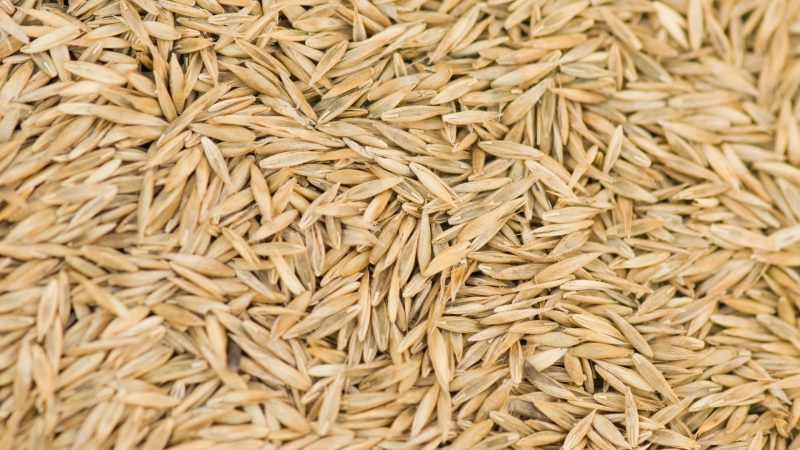
In general, you can put grass seed down any month of the year. However, the best month to put grass seed down depends on the type of grass you will plant. For warm-season grasses such as Bermuda grass, the best time to plant their seed is in the late spring or early summer, which falls between May and June.
On the other hand, cool-season grasses such as Kentucky bluegrass and perennial ryegrass should be planted in late summer or early fall, and September is considered the best month. Nevertheless, temperature also plays a very important role, so you should know the weather forecast on your planting day.
This is why it is difficult to choose the best month for seeding your lawn if you are living in the transition zone. In the US, this horizontal region is between the northern and southern turf regions and includes Delaware, Maryland, North Carolina, and Virginia. In these states, summer is too hot and winter is too cold.
What Time of Day Should I Seed My Lawn?
There is no exact time of day to seed your lawn that will guarantee the best result. Nonetheless, planting seeds is usually done in the morning but only if the weather is warm enough. Seeds need warm soil so they can germinate. Therefore, planting seeds in the cold hours of the day will prevent their growth.
How Warm Does It Need to Be for Grass Seed to Germinate?
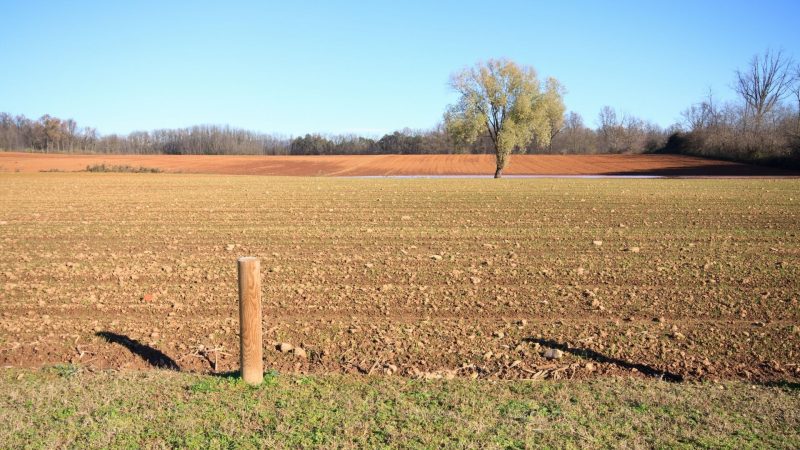
The right temperature needed for grass seed to germinate mainly depends on the type of grass. If you are living in the southern part of the United States and you plant warm-season grass seeds, the recommended air temperature is around 80°F (26.6°C) in the daytime. And again, it’s best to plant this grass seed in the spring.
In contrast, cool-season grass seeds planted in September are expected to germinate well at a temperature range of 60 – 75°F (15.5 – 23.8°C) in the daytime. At this point, the soil temperature is between 50 and 65°F (10 and 18.3°C). Soil temperatures lower than 50°F are too cold for grass seed to germinate.
Should I Soak Grass Seed Before Planting?
You should soak grass seeds before planting them. It will not only provide water to the interior of the seeds but will also help soften the hard shells. This strategy is called pre-germination, wherein you will imitate how nature treats garden seeds. Therefore, it will help a lot in making seed germination faster.
How Do I Speed up Grass Seed Germination?
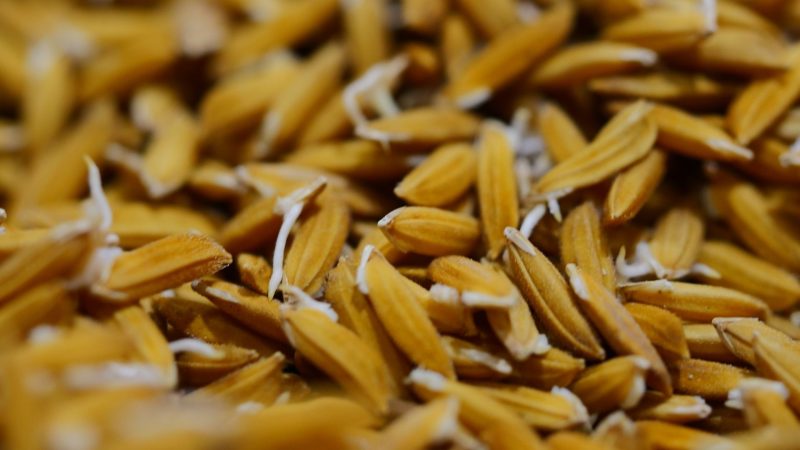
As mentioned above, pre-germination helps in speeding up germination. To do this, soak the grass seeds in water until such time that tiny roots become visible. Then, place them inside a burlap bag and hang it to let the water drip. However, don’t let the seeds get dry before planting them. Otherwise, they will soon die.
On the other hand, some seed producers make germination time faster through seed priming. Just like pre-germination, grass seeds are soaked in water before planting them. But this time, the amount of water is limited and the primed seeds are being stored in poly bags for a long time and should be dried before planting.
The ideal temperature for drying primed seeds is 15°C (59°F), depending on the type of grass. Nevertheless, the key ingredients for successful seed priming are time and oxygen. In general, this strategy is quite complicated. So, if your lawn is only small, you might want to apply pre-germination instead of seed priming.
Will Grass Seed Grow if I Just Throw It Down?
Grass seed will still grow naturally even if you just throw it down, provided that it will have direct contact with the soil. However, it happens only in very rare conditions, such as in wet soil and when the temperature is warm. But then, the seeds are also very likely to be taken by wind or be eaten by birds and rodents.
If grass seed is not covered with soil, the growth rate will be very low and the roots will not develop properly. In most cases, the lawn will have some bare patches since the grass seeds will not grow uniformly. Throwing grass seeds also leads to competition for sunlight due to inadequate root spacing between them.
Will Grass Seed Grow On Top of Dirt?
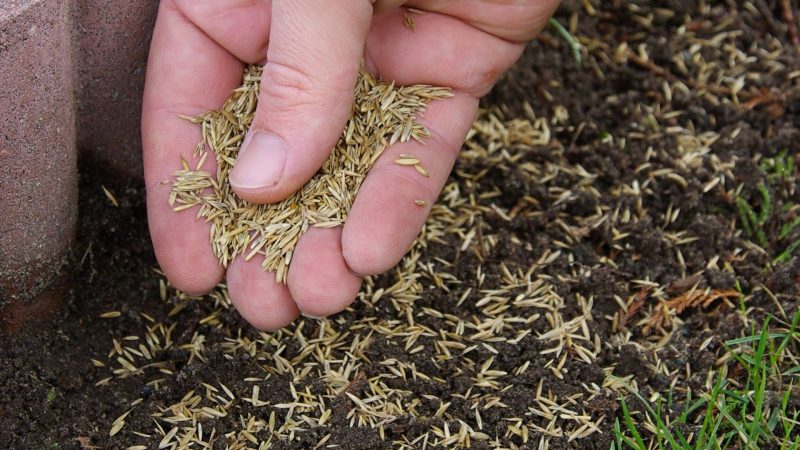
Grass seed can still grow on top of dirt but not in a correct manner. Despite the harsh treatment, they may still attempt to sprout but most of them will die. This is because they should be about an inch deep under the soil. Just like throwing grass seeds, putting them on top of dirt has similar negative effects.
What Triggers Grass Seed to Germinate?
Sufficient sun exposure and enough soil moisture are the two main factors that will trigger your grass seed to germinate. Proper exposure to the sun depends on the season, the temperature when you seed your lawn, and the type of seed. Too hot or too cold soil temperature will definitely prevent grass seed from growing.
Proper soil preparation and adequate watering are also necessary for the seed to grow healthy. Rain can help in maintaining moisture in the soil but heavy rain can kill newly planted grass seeds, either by drowning them or getting them washed away. This is also why planting grass seeds is best if the soil is relatively dry.
How Do You Know if Grass Seed Is Germinating?
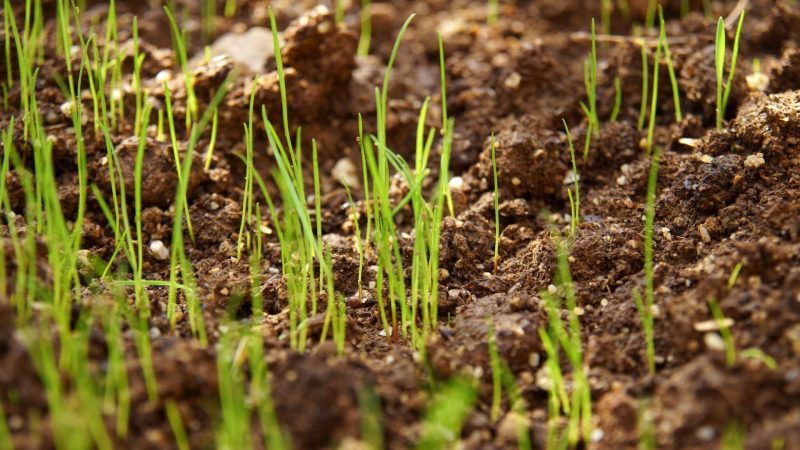
You will know if grass seed is germinating when its structural components start to rise from the embryo. This means that the seeds have absorbed the right amount of water and have gained enough energy needed for seedling development. The process will continue until the first true leaf appears.
How Often Do You Water New Grass Seed?
Aside from the correct temperature, new grass seeds also need water before they can germinate. If the water is not enough, they will get dehydrated and die. Likewise, too much water can cause saturation and will drown your seeds. The seeds may also be washed away and will experience poor germination rates.
Therefore, you should keep the grass seed moist all the time. To do this, water your new lawn every day but only for 5 – 10 minutes. The amount of water will depend on your lawn area. The key here is to water the seedbed 6 – 8 inches deep a few days before seeding, and seed your lawn once the soil surface is already dry.
Once the seeds germinate, continue watering every day but lightly and maintain 1 – 2 inches deep of soil moist. Once the root system has already developed, water it once or twice a week at 1-inch deep only. This time, your lawn needs less water. To measure the depth, you can use an ordinary screwdriver.
Will Grass Seed Grow Without Watering?
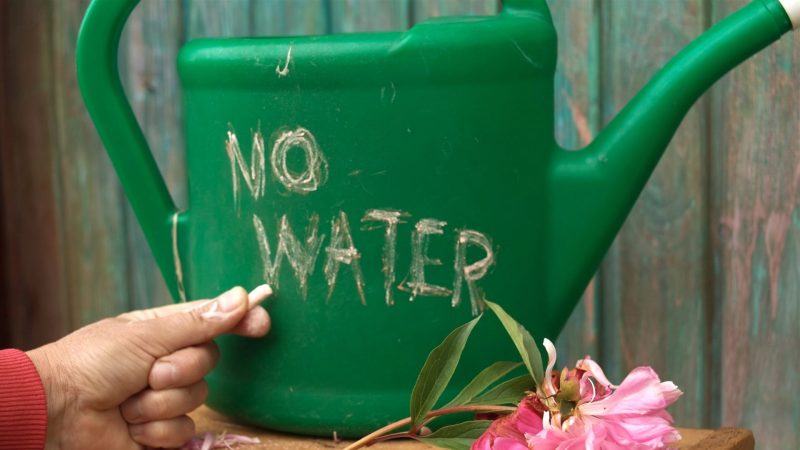
Grass seeds will not grow without watering them. Water is a very essential component in seed development, and grass seed needs consistent watering for germination. Grass, or any kind of plant, will not grow with sunlight alone. So, if you will not water the grass seeds, they will dry out and will eventually die.
What Is the Quickest Growing Grass Seed?
For cool-season grass, the quickest growing seed is the annual perennial ryegrass, which grows within 7 – 10 days at a soil temperature of 50 – 60°F. On the other hand, Bermuda grass is the fastest-growing seed for warm-season grass. If the soil temperature is above 70°F, it will only take seven days to start growing.
How Long Does It Take Scotts Grass Seed to Grow?
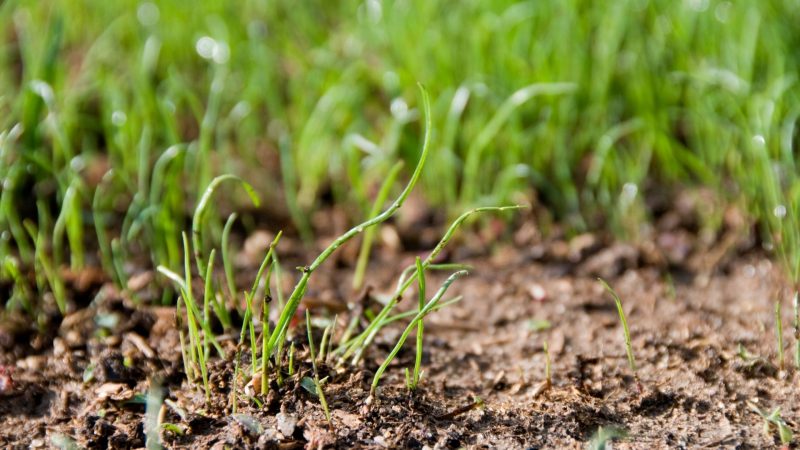
Generally speaking, it usually takes 5 – 10 days for Scotts grass seed to grow. Nevertheless, the Scotts Turf Builder Grass Seed Dense Shade Mix will grow between 6 and 14 days. This product is ideal for tall fescue (Festuca arundinacea), a grass species that is used only with minimum maintenance.
Can You Walk on Grass Seed?
You must not walk on grass seeds until the grass is mature enough. These growing seedlings are very fragile and will be damaged if you walk on them. Also, avoid your small children and pets from walking on newly seeded grass since soft steps can also destroy them. If possible, put signs or cordon off the area.
Typically, it takes at least a month before you can walk on grass seed. Too much watering can also eventually damage your lawn. The key here is to first mow your lawn once the grass reaches the maximum height, depending on the grass species. After mowing it about 3 – 5 times, you can already walk on your lawn
Do I Need to Rake in Grass Seed?
The need to rake in grass seed mainly depends on your purpose. If you will seed a new lawn or will repair bare soil patches, you should rake in the seeds. To ensure accurate germination, the seeds should be properly in contact with the soil, thus, raking will do the job. Merely spreading the seeds is not enough.
However, raking is not necessary if you are only overseeding your thinning lawn. The presence of the established grass blades will prevent rake tines from reaching the soil, and raking will have no effect. Besides, the new seeds will move between the grass blades and will eventually migrate to the soil.
Can You Put Turf Builder and Grass Seed Down at the Same Time?
You should not put Turf Builder and grass seed down at the same time. Otherwise, it will result in uneven grass growth. Turf Builder is a fertilizer manufactured by Scotts Company and comes in several varieties. If you will use the Turf Builder Starter Food to a new lawn, apply it directly after seeding.
Afterward, wait for 6 – 8 weeks before applying the fertilizer again. However, don’t apply this product if you’re expecting heavy rain. On the other hand, Scotts Turf Builder Lawn Food is best applied just before seeding an already established lawn. If you will not seed your lawn at once, weeds will consume the fertilizer.
Summary
The growth of your grass seed depends on how you will use mother nature. Rain will help you water your lawn, while the weather will provide the soil temperature. Nonetheless, different grass species have different requirements when it comes to temperature. This is why seeding a lawn is about timing and lots of patience.
Related: How to Cut Extremely Long Grass? | A Complete Guide
List of Sources
How to Manage Pests: The UC Guide to Healthy Lawns